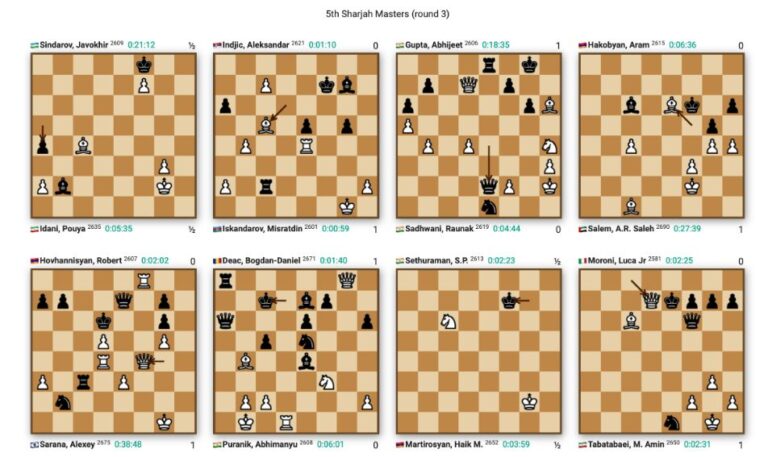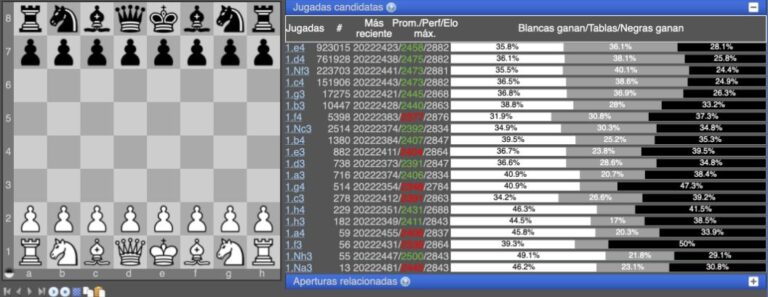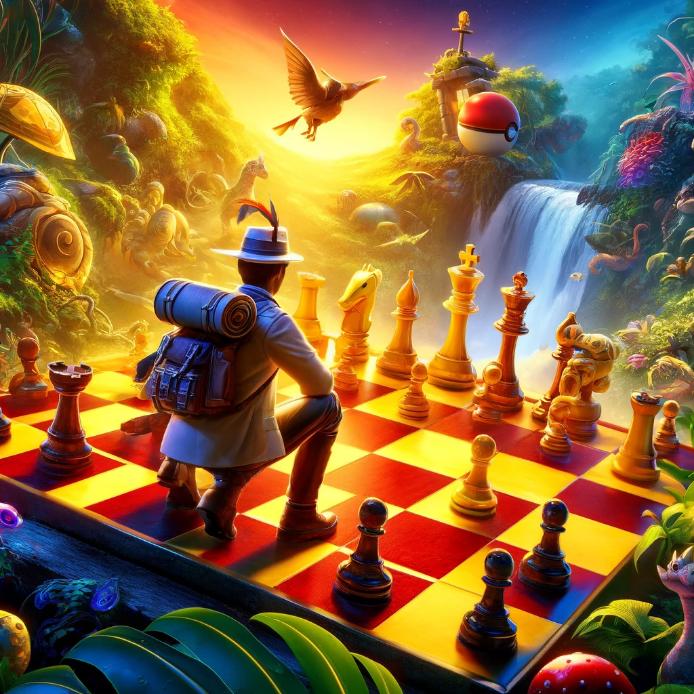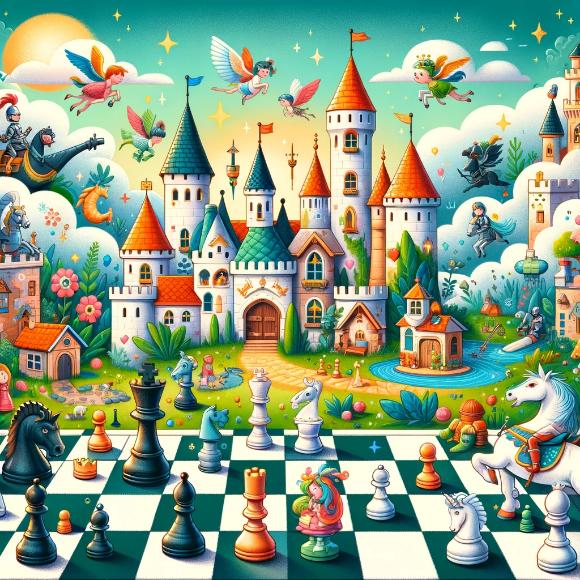Understanding how to get better at chess from the outset is crucial for anyone aspiring to master this ancient game of strategy and intellect. Whether you’re taking your first steps on the chessboard or seeking to refine your skills for more competitive play, this guide, meticulously crafted by International Master Guillermo Baches, aims to transform your approach and elevate your game. Here, we blend timeless tactics with modern strategies, offering insights into developing a robust opening repertoire, enhancing your tactical prowess, and understanding the psychological aspects of chess. Embark on a journey of improvement and discovery, where each move brings you closer to the mastery and depth chess offers.
Understanding the Chess Battlefield
The Importance of Opening Principles
Opening plays in chess are not just about moving pieces onto the board. They are about laying the groundwork for the complex battles that will unfold. Understanding key opening principles—such as controlling the center, developing your pieces, and king safety—is essential for any player aiming to improve.
Mastering Middle-Game Strategies
The middle game is where the battle intensifies. Here, strategic planning, tactical awareness, and positional understanding come to the forefront. Learn how to evaluate positions, identify your opponent’s weaknesses, and leverage your strengths.
Tactical Training and Strategic Thinking
The Role of Tactics in Chess
Tactical prowess is a formidable tool in chess. Discover the significance of tactical motifs like forks, pins, and skewers. I’ll guide you through exercises and methods to sharpen your tactical vision, allowing you to seize opportunities and navigate complex positions with confidence.
Enhancing Your Strategic Play
While tactics are about immediate actions, strategy is the art of planning. Develop a deeper understanding of strategic concepts such as pawn structure, piece activity, and space control. Grasp how to formulate long-term plans and adapt them as the game evolves.
Psychological Aspects of Chess
The Mental Game
Chess is not just played on the board but also in the mind. Explore the psychological dimensions of chess, from handling pressure and managing time to the importance of resilience and psychological warfare against your opponents.
Learning from Losses
Every loss is an opportunity for growth. I’ll share personal anecdotes and lessons learned from my defeats, offering strategies for analyzing your games, identifying mistakes, and turning setbacks into stepping stones for improvement.
Advanced Techniques and Practices
Endgame Mastery
Understanding endgames is crucial for closing out winning positions and saving seemingly lost games. Delve into key endgame principles, from pawn promotion strategies to the importance of piece activity and king involvement.
Opening Repertoire Development
Building a solid opening repertoire tailored to your style can significantly improve your performance. Learn how to select openings, study grandmaster games, and use digital tools and resources to deepen your opening knowledge.
Crafting Your Opening Arsenal: Tailoring Your Repertoire for Success
In the journey to chess mastery, constructing a solid opening repertoire that aligns with your personal style is pivotal for enhancing your performance. This process is not just about selecting the right openings; it’s about understanding the principles behind them, studying how grandmasters navigate these waters, and leveraging digital tools to refine your approach. Below, we delve into the art of building an effective opening repertoire, focusing on versatile systems that cater to a broad range of positions while reflecting your individual flair.
Selecting Your Openings: A Dual Approach with 1.e4 and 1.d4
A well-rounded opening repertoire for White should include both 1.e4 and 1.d4 moves. This dual approach equips you with the flexibility to adapt to your opponent’s responses and steer the game into positions where you feel most comfortable.
- 1.e4 Openings: Embracing the Ruy Lopez – The Ruy Lopez is a cornerstone of 1.e4 play, offering White a blend of tactical and strategic play. Its rich strategic depth allows players to apply pressure from the opening while maintaining the flexibility to adapt to Black’s responses.
- 1.d4 Openings: The Strength of Catalan and Torre Systems – For those preferring 1.d4, the Catalan and Torre systems provide a solid foundation. The Catalan, with its open lines and bishop pair advantage, is ideal for players who enjoy strategic battles over tactical skirmishes. The Torre Attack, on the other hand, offers a more direct approach to control and attack, suitable for players looking to unsettle their opponents early on.
Building a Defense: Versatile Responses to 1.e4 and 1.d4
Your choice of defense against 1.e4 and 1.d4 can define your early game strategy and set the tone for the middle game. Here’s how to build a resilient and adaptable defense:
- Against 1.e4: The Sicilian and Scandinavian Defenses – The Sicilian Defense is renowned for its counter-attacking potential and is a favorite among players seeking dynamic play. For those looking for a simpler yet effective defense, the Scandinavian offers clear development plans and the opportunity to transition into familiar middlegame structures.
- Against 1.d4: Embracing the Nimzo-Indian and Queen’s Gambit Declined – The Nimzo-Indian Defense is a powerful tool against 1.d4, offering Black the chance to control the board’s center indirectly. The Queen’s Gambit Declined is a classic defense that has stood the test of time, providing solid and flexible responses to White’s attempts at control.
Leveraging Digital Tools and Resources
The digital age has provided chess enthusiasts with an array of tools to study and enhance their opening preparation. Utilizing databases such as ChessBase or online platforms like Chess.com and Lichess can offer insights into the latest trends, grandmaster games, and theoretical novelties. Interactive tools and engines like Stockfish or Leela Chess Zero allow for deep analysis and exploration of opening lines, enabling players to understand the nuances of their chosen defenses and attacks.
A Personal Journey
Building a solid opening repertoire is a deeply personal and evolving journey. As you grow as a player, your understanding of various positions will deepen, and your preferences may shift. The key is to remain flexible, continuously learn from your games, and adapt your repertoire to suit your evolving style. Remember, the ultimate goal is not just to memorize moves but to understand the principles behind them, allowing you to navigate the opening phase with confidence and ease.
By embracing both 1.e4 and 1.d4 with White and adopting versatile defenses with Black, you set a strong foundation for your chess journey. Combine this with the diligent study of grandmaster games and leveraging digital tools, and you’re on your way to developing a robust opening repertoire that not only improves your performance but also makes the game infinitely more enjoyable.
Incorporating Technology in Chess Training
The Digital Revolution in Chess Learning
The digital age has transformed chess learning. Explore how to effectively use online platforms, software, and databases for self-improvement. I’ll share insights into the best resources for online play, tactical training, and theoretical study.
AI and the Future of Chess Training
AI has not only challenged our understanding of chess but also opened new avenues for learning. Discover how AI tools can provide personalized training, simulate games against grandmasters, and offer unparalleled analysis of your play.
Building a Chess Community
The Importance of a Supportive Chess Network
No player improves in isolation. Learn about the benefits of joining chess clubs, participating in online forums, and engaging with the chess community. Sharing experiences, challenges, and achievements can significantly accelerate your learning curve.
Teaching and Learning Chess
Teaching others is a powerful way to improve your own understanding. Explore how mentoring, coaching, or simply discussing strategies can deepen your insights and reinforce your knowledge.
Conclusion: The Journey Continues
Improving at chess is a continuous journey of learning, practice, and passion. Whether you’re aiming to become a grandmaster or simply looking to enjoy the game more deeply, the paths to improvement are as diverse as the game itself. Embrace the challenge, enjoy the process, and let the principles of chess guide not just your play, but also your approach to life’s complex puzzles.







